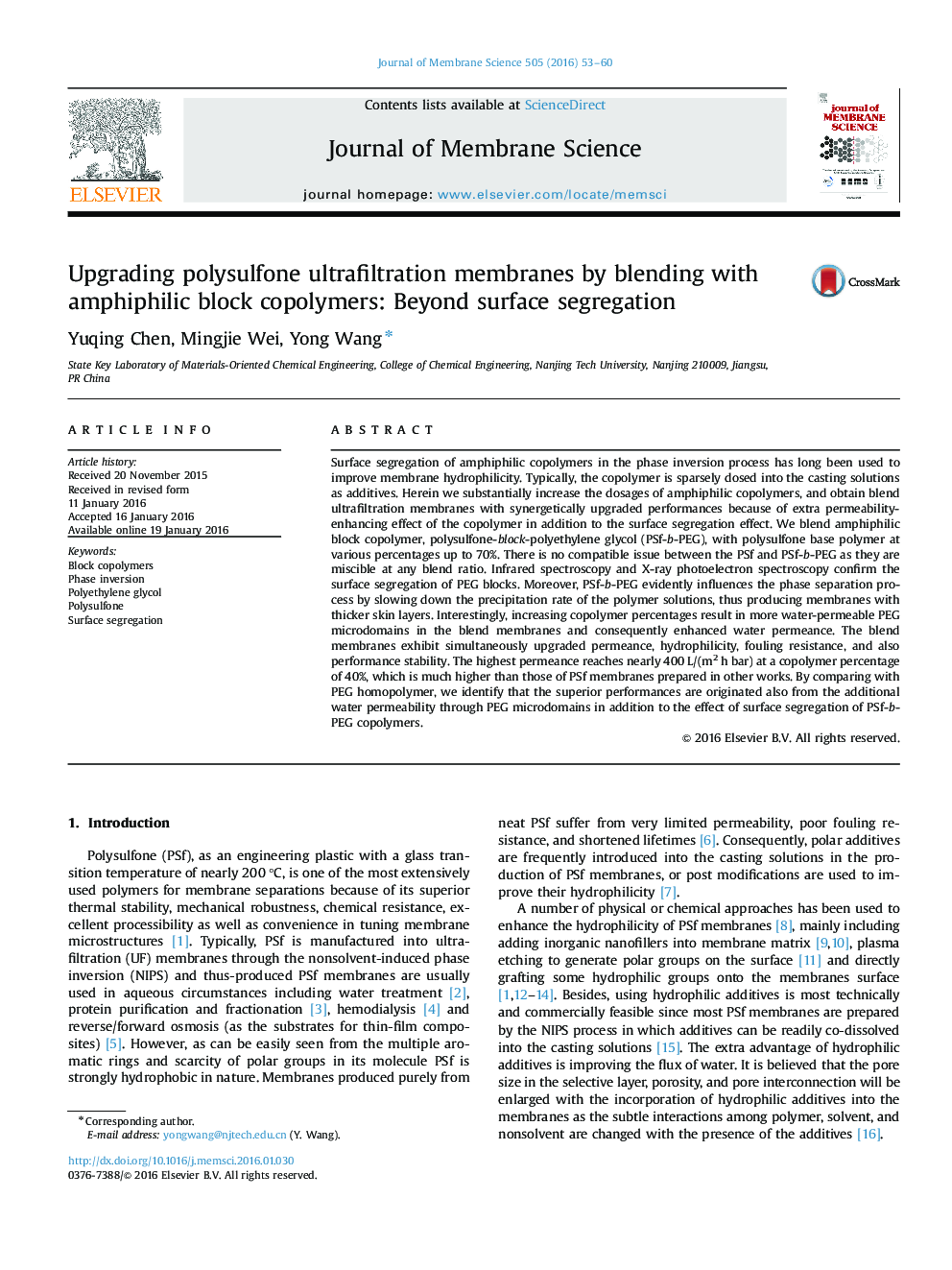| کد مقاله | کد نشریه | سال انتشار | مقاله انگلیسی | نسخه تمام متن |
|---|---|---|---|---|
| 632749 | 1455994 | 2016 | 8 صفحه PDF | دانلود رایگان |
• PSf/polyethylene glycol block copolymers are used at high percentages up to 70%.
• PSf/PEG block copolymers are miscible with PSf at arbitrary blend ratio.
• Surface segregation of PEG blocks occurs, leading to improved hydrophilicity.
• Water-permeable PEG microdomains also enhance permeance of the blend membranes.
• PSf-b-PEG synergetically upgrades PSf membranes in multiple aspects.
Surface segregation of amphiphilic copolymers in the phase inversion process has long been used to improve membrane hydrophilicity. Typically, the copolymer is sparsely dosed into the casting solutions as additives. Herein we substantially increase the dosages of amphiphilic copolymers, and obtain blend ultrafiltration membranes with synergetically upgraded performances because of extra permeability-enhancing effect of the copolymer in addition to the surface segregation effect. We blend amphiphilic block copolymer, polysulfone-block-polyethylene glycol (PSf-b-PEG), with polysulfone base polymer at various percentages up to 70%. There is no compatible issue between the PSf and PSf-b-PEG as they are miscible at any blend ratio. Infrared spectroscopy and X-ray photoelectron spectroscopy confirm the surface segregation of PEG blocks. Moreover, PSf-b-PEG evidently influences the phase separation process by slowing down the precipitation rate of the polymer solutions, thus producing membranes with thicker skin layers. Interestingly, increasing copolymer percentages result in more water-permeable PEG microdomains in the blend membranes and consequently enhanced water permeance. The blend membranes exhibit simultaneously upgraded permeance, hydrophilicity, fouling resistance, and also performance stability. The highest permeance reaches nearly 400 L/(m2 h bar) at a copolymer percentage of 40%, which is much higher than those of PSf membranes prepared in other works. By comparing with PEG homopolymer, we identify that the superior performances are originated also from the additional water permeability through PEG microdomains in addition to the effect of surface segregation of PSf-b-PEG copolymers.
Figure optionsDownload high-quality image (256 K)Download as PowerPoint slide
Journal: Journal of Membrane Science - Volume 505, 1 May 2016, Pages 53–60
